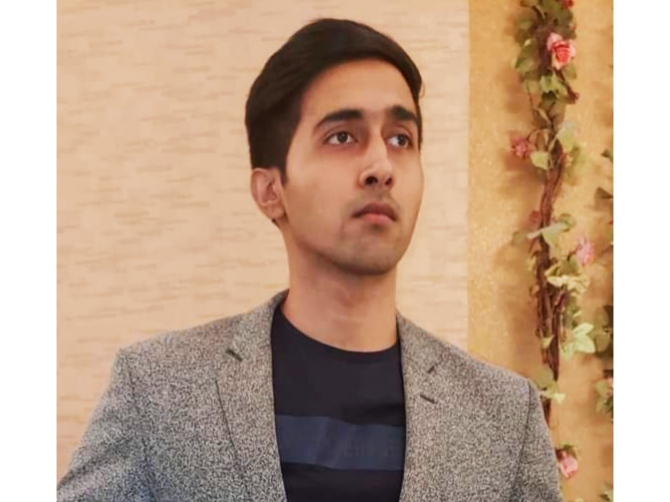Micron Technology, Inc. (MU - Get Rating) designs, manufactures and sells memory and storage products worldwide. The company operates through four segments: its Compute and Networking Business Unit; Mobile Business Unit; Storage Business Unit; and Embedded Business Unit. In comparison, NVIDIA Corporation (NVDA - Get Rating) is an artificial intelligence (AI) computing company that operates in two segments: Graphics and Compute & Networking.
While the current global semiconductor shortage has been impacting several industries, the semiconductor industry has been thriving due to the rising prices of chips. Increased demand for chips, primarily from the consumer electronics and automotive industries, and a supply shortage, are driving the rising prices. According to a Technavio report, the global semiconductor market is expected to grow at a 4% CAGR between 2020 – 2024. Both MU and NVDA should benefit as a result.
NVDA has gained 42.8% over the past nine months, while MU returned 43.4%. However, NVDA’s 84.3% gains over the past year are significantly higher than MU’s 43.9% returns. Moreover, in terms of their past six months’ performance, NVDA is the clear winner with 48.7% gains versus MU’s negative returns.
Click here to checkout our Semiconductor Industry Report for 2021
But which of these two stocks is a better buy now? Let’s find out.
Latest Developments
On June 1, MU unveiled memory and storage innovations across its portfolio based on its industry-leading 176-layer NAND and 1-alpha DRAM technology. In addition, it introduced the industry’s first Universal Flash Storage 3.1 solution for automotive applications. The company’s President and CEO, Sanjay Mehrotra, said, “Today, we are debuting new memory and storage solutions that accelerate innovation, from powerful data center servers and faster client devices to intelligent vehicles at the edge.”
NVDA launched TensorRT 8 on July 20, representing the eighth generation of the company’s AI software, which slashes inference time in half for language queries. Greg Estes, vice president of developer programs at NVDA, said, “The latest version of TensorRT introduces new capabilities that enable companies to deliver conversational AI applications to their customers with a level of quality and responsiveness that was never before possible.”
Recent Financial Results
MU’s revenue increased 36.5% year-over-year to $7.42 billion for its fiscal third quarter ended June 3, 2021. The company’s non-GAAP operating income grew 141% year-over-year to $2.36 billion, while its non-GAAP net income increased 130.9% year-over-year to $2.17 billion. Also, its non-GAAP EPS came in at $1.88, up 129.3% year-over-year.
NVDA’s revenue increased 84% year-over-year to $5.66 billion for its fiscal first quarter, ended May 2, 2021. The company’s non-GAAP operating income grew 112% year-over-year to $2.56 billion. Its non-GAAP net income increased 107% year-over-year to $2.31 billion. Also, its non-GAAP EPS came in at $3.66, up 103% year-over-year.
Past and Expected Financial Performance
MU’s total assets have grown at a 10.2% CAGR over the past three years. Analysts expect MU’s revenue to increase 29% in its fiscal year 2021 and 33.6% in fiscal 2022. The company’s EPS is expected to grow 109.9% in fiscal 2021 and 92.6% in fiscal 2022. Also, its EPS is expected to grow at a 63.6% rate per annum over the next five years.
In comparison, NVDA’s total assets grew at a 39% CAGR over the past three years. The company’s revenue is expected to increase 49.1% in its fiscal year 2021 and 10.2% in fiscal 2022. Its EPS is expected to grow 58.2% in fiscal 2021 and 9.3% in fiscal 2022. NVDA’s EPS is expected to grow at a 26.8% rate per annum over the next five years.
Profitability
MU’s trailing-12-month revenue is 1.32 times NVDA’s. However, NVDA is more profitable, with 63.26% and 27.66% respective gross profit and net income margins, versus MU’s 33.66% and 16.20%.
Furthermore, NVDA’s ROE, ROA, and ROTC of 33.43%, 13.18%, and 15.10%, respectively, compare favorably with MU’s 10.30%, 5.79%, and 6.59%.
Valuation
In terms of forward non-GAAP P/E ratio, NVDA is currently trading at 48.59x, which is 292.8% higher than MU’s 12.37x. And NVDA’s 19.12x forward EV/Sales is 44.6% higher than MU’s 3.01x.
So, MU is the more affordable stock.
POWR Ratings
MU has an overall B rating, which equates to Buy in our proprietary POWR Ratings system. In comparison, NVDA has an overall C rating, which translates to Neutral. The POWR Ratings are calculated considering 118 different factors, with each factor weighted to an optimal degree.
Both MU and NVDA have B grades for Quality. This is justified given MU’s 16.20% net income margin, which is 202% higher than the 5.36% industry average. NVDA’s 27.66% net income margin is 415.70% higher than the 5.36% industry average.
MU has a B grade for Value, which is consistent with its 3.02x forward P/S, which is 24.8% lower than the 4.02x industry average. However, NVDA has a D grade for Value, in sync with its 19.23x forward P/S, which is 378.9% higher than the 4.02x industry average.
Of the 99 stocks in the B-rated Semiconductor & Wireless Chip industry, MU is ranked #20, while NVDA is ranked #53.
Beyond what we’ve stated above, we have also rated both the stocks for Sentiment, Stability, Momentum, and Growth. Click here to view all the MU Ratings. Also, get all the NVDA ratings here.
The Winner
The semiconductor space is booming with the rising demand for chips. And even though MU and NVDA are expected to benefit from the industry tailwinds in the coming quarters, we think it is better to bet on MU now because of its lower valuation and impressive growth prospects.
Our research shows that odds of success increase when one invests in stocks with an Overall Rating of Strong Buy or Buy. View all the top-rated stocks in the Semiconductor & Wireless Chip industry here.
Click here to checkout our Semiconductor Industry Report for 2021
Want More Great Investing Ideas?
MU shares were trading at $75.39 per share on Wednesday afternoon, up $1.17 (+1.58%). Year-to-date, MU has gained 0.28%, versus a 18.10% rise in the benchmark S&P 500 index during the same period.
About the Author: Nimesh Jaiswal

Nimesh Jaiswal's fervent interest in analyzing and interpreting financial data led him to a career as a financial analyst and journalist. The importance of financial statements in driving a stock’s price is the key approach that he follows while advising investors in his articles. More...
More Resources for the Stocks in this Article
| Ticker | POWR Rating | Industry Rank | Rank in Industry |
| MU | Get Rating | Get Rating | Get Rating |
| NVDA | Get Rating | Get Rating | Get Rating |






